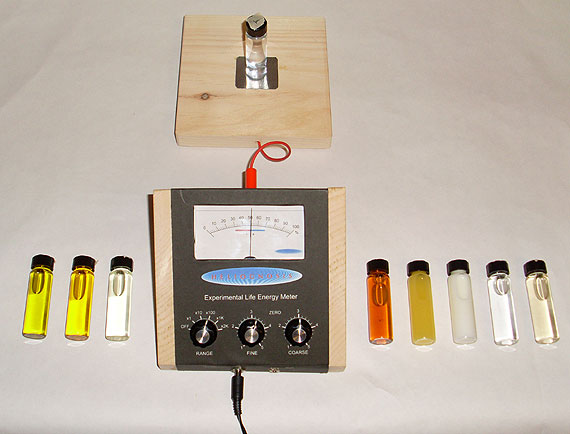Experimental
Report 7:
Liquid Comparison using the Experimental Life Energy
Meter
by Heliognosis
On
October 1, 2008 Heliognosis began shipping the rev. D of the model LM3
Experimental Life Energy Meter (shown in Figure 1). This revision
features greater stability of readings at high amplification, affording
a 10x decrease in long term drift and rapid fluctuations. This has
dramatically improved the efficacy of the x100, x1000 and x2000 ranges.
A list of liquids alongside their relative and absolute readings using
the new instrument will be added to this paper as more samples are
measured.

Figure 1
Experimental
Life Energy Meter rev. D with small flat plate electrode. From left to
right: Olive oil, Flax seed oil, Sunflower Oil, Tap Water, Black Tea,
Orange Juice, Milk, Luso Water, Aloe Vera.
|